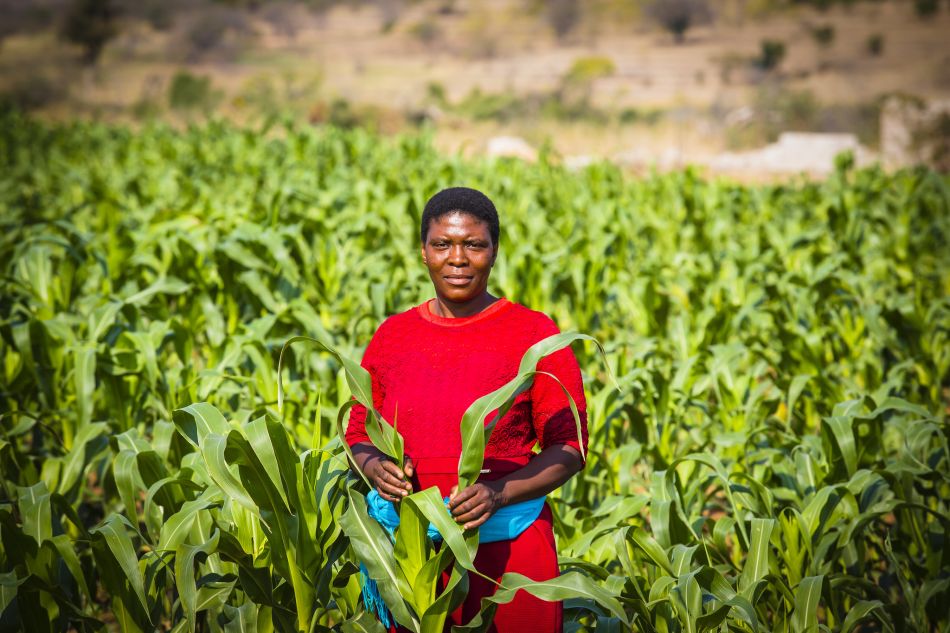Throughout Southern Africa, drought is the deadliest national disaster. Yet one-third of the region’s population live in drought-prone areas. As COP26 places climate change front and center on the global development agenda, we must remember that with proper preparedness, drought doesn’t have to be such a killer. But being prepared means being proactive rather than responding to crises.

Southern Africa has historically been one of the world’s most vulnerable regions to the effects of droughts. Over the past 30 years, rainfall has been declining in the southern African drylands. From 1980 to 2015, droughts cost the region US$3.4 billion, directly affecting more than 100 million people. Looking ahead, the region is expected to become hotter and drier with climate change – a trend that will increase the likelihood of even more extreme droughts.
Despite the severity of past droughts and the likelihood of future droughts, many countries haven’t had an objective forecast-based early warning and response mechanism to enable them to identify the onset of drought. The focus in the region is often on crisis management and humanitarian interventions after and during the event, rather than on long-term resilience at the household and community level before the drought.
Increasing preparedness
To increase the level of preparedness of the 16 member states of the Southern Africa Development Community (SADC), the International Water Management Institute (IWMI) has worked with the World Bank on a multi-year drought resilience advisory services and analytics initiative.
“The Southern African Drought Resilience Initiative (SADRI) provides early warning of drought and a preparedness strategy for farmers,” said Amarnath Giriraj, a disaster risk management and climate resilience researcher at IWMI. “It’s important to quantify the risk of drought and provide timely response strategies.”
Giriraj and interdisciplinary experts from IWMI and the World Bank have now quantified that risk by developing profiles for the 16 countries that show drought hotspots through a new online tool. The profiles provide snapshot overviews of the drought resilience capacity of each member state. They consist of a stocktaking and needs assessment at the country level to identify institutional capacity, policies and programs, ongoing activities, key partners, gaps, and opportunities.
Three pillars of drought risk management
The profiles are based on three pillars of integrated drought risk management that center around interconnected, multi-disciplinary and multi-institutional activities. These pillars are: 1) vulnerability and impact assessment; 2) monitoring and early warning systems; and 3) mitigation, preparedness and response.
“Each pillar is fundamental in promoting proactive drought management measures,” explained Giriraj. “The pillars are dependent on one another and if one of the pillars is not implemented this will lead to failure in strengthening drought resilience.”
Vulnerability and impact assessment
The experts first looked at vulnerability and impact assessment. “We wanted to establish the impacts of a megadrought,” said Giriraj. “For example, drought would have a negative impact on agricultural growth which would then impact consumers as the cost of bread increases.”
Processing the data to prepare those assessments proved onerous. The team went back to records starting in 1900 to see how the climate has changed over the years. They then reviewed reports produced by global organizations. IWMI computed the National Drought Risk Index from scratch by using Google Earth to produce risk maps for all of Southern Africa. “Unfortunately, drought-related data are not standardized across countries and are surprisingly difficult to source,” said Giriraj. “The team had to trawl websites, datasets, databases and call national focal points to obtain data.”
Monitoring and early warning systems
The second pillar focuses on establishing a drought early warning system (DEWS) for each country. Effective drought monitoring and early warning should be a comprehensive assessment of current and future drought and water supply conditions. The system should integrate climatic parameters with water information such as stream flow, groundwater levels, reservoir and lake levels, and soil moisture. Monitoring the impacts that occur on the ground as a drought develops helps to calibrate assessments of severity for local areas.
“This pillar is tightly integrated with the other pillars because the DEWS information, if used effectively, can be the basis for reducing vulnerability and improving mitigation and response capacities of people and systems at risk,” said Giriraj.
Mitigation, preparedness, and response
The third pillar recommends measures and actions that countries can take reduce their vulnerability to drought and minimize the resulting impacts. The goal of this pillar is to determine appropriate mitigation and response actions aimed at reducing risk and identifying the appropriate triggers for mitigation actions. It also identifies agencies, ministries, or organizations that are responsible to develop and implement mitigation actions.
Drought is now becoming an important part of national and regional development planning in SADC and is being recognized as a chronic problem rather than a series of ad hoc emergencies. “We hope that with the development of these profiles SADC countries will transform from reactive to proactive drought risk management and turn a previous crisis into an opportunity for improvement,” concluded Giriraj.

